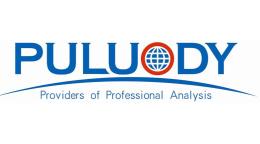方案详情文
智能文字提取功能测试中
Designation: D7210-13 4y D7210-3 Standard Practice forExtraction of Additives in Polyolefin Plastics This standard is issued under the fixed designation D7210; the number immediately following the designation indicates the year oforiginal adoption or, in the case of revision, the year of last revision. A number in parentheses indicates the year of last reapproval. Asuperscript epsilon (e) indicates an editorial change since the last revision or reapproval. 1. Scope* 1.1 This practice covers a variety of extraction techniquesfor antioxidant and slip additives used in polyolefins. Typically,the extracted additives are separated and quantified using achromatographic technique such as the procedure explained inTest Method D6953. Chromatographic analysis of the extractsis not included in this practice. 1.2 This standard does not purport to address all of thesafety concerns, if any, associated with its use. It is theresponsibility of the user of this standard to establish appro-priate safety and health practices and determine the applica-bility of regulatory limitations prior to use. NoTE 1-There is no known ISO equivalent to this standard. 2. Referenced Documents 2.1 ASTM Standards: 3. Terminology 3.1 Definitions: 3.1.1 For definitions of plastic terms used in this practice,see Terminologies D883 and D1600. 3.2 For units, symbols, and abbreviations used in thispractice refer to Terminology E131. 3.3 Abbreviations: 3.3.1 LDPE-Low-Density Polyethylene ( T h is p r actice is under the jurisdiction of ASTM Committee D2 0 on Pl a stics a n dis the direc t responsibili t y of Subcommittee D20 . 70 on A nalytical Methods and S ection D20.70.01 o n P hysical Methods. ) ( Current e dition a pproved A p ril 1, 2 0 13. P u blished Ap r i l 2013. Ori g i nallyapproved in 2 006. L ast p revious e dition approved i n 2 006 as D 7210- 06.DOI : 10.1520/D7210-13. ) ( " For referenced AST M s t andards, v isit the ASTM w ebsite, w ww.astm.org, orcontact ASTM Customer Service at service@astm.org. For Annual Book of ASTMStandards volume information, refer to t he standard’s Document S u mmary page on the ASTM website. ) 3.3.2 LLDPE-Linear Low-Density Polyethylene 3.3.3 HDPE-High-Density Polyethylene 3.3.4 PP-Polypropylene 3.4 Definitions: Additives: 3.4.1 BHEB-2,6-di-t-butyl-4-ethyl-phenol or butylated hy-droxyethyl benzene, CAS No. 4130-42-1 3.4.2 BHT-2,6-di-t-butyl-cresol Or butylatedhydroxytoluene, CAS No. 128-37-0 3.4.3 2-benzotriazol-2-yl-4-methylphenol, CAS No. 2440-22-4 3.4.4 bis(3,3,5,5-tetramethyl-4-piperidyl)decanedioate,CAS No.91450-21-4 3.4.5 Cis-13-docosenamide or erucamide slip, CAS No.112-84-5 3.4.6 N,N'-diphenylbenzene-1,4-diamine, CAS No. 74-31-7 3.4.7 2,2'-ethylidene bis (4,6-di-t-butyl phenol), CAS No.112-84-5 3.4.8 Tetrakis[methylene (3,5-di-t-butyl-4-hydroxy hydro-cinnamate)] methane, CAS No. 98584-37-3 3.4.9 1,3,5-trimethyl-2,4,6-tris (3,5-di-t-butyl-4-hydroxybenzyl) benzene, CAS No. 99346-90-4 3.4.10 Octadecyl-3,5-di-t-butyl-4-hydroxy hydrocinnamate,CAS No.2082-79-3 3.4.11 Sodium Alkyl Sulfonate, CAS No. 68411-30-3 3.4.12 Tris(2,4-di-t-butylphenyl) phosphite, CASNo.31570-04-4 3.4.13 Tris(2,4-di-t-butylphenyl))phosphate (oxidizedTris(2,4-di-t-butylphenyl) phosphite) 3.4.14 TNPP-Tris(nonylphenyl) phosphite, CAS No.26523-78-4 3.4.15 Hydrolyzed TNPP-Nonylphenol, CAS No. 104-40-5 3.4.16 Oxidized TNPP-Tris(nonylphenol)phosphate CASNo. 26569-53-9 4. Summary of Practice 4.1 The polymer sample isISground to approximately a0.5-mm (~40-mesh) or 1-mm (~20-mesh) particle size andextracted by one of the techniques listed in this practice. 5. Significance and Use 5.1 Separation and identification of additives used in themanufacture of polyolefin plastics is necessary in order tocorrelate performance properties with polymer composition.This practice provides guidelines for extracting phenolicantioxidants, phosphite antioxidants, UV stabilizers, antistaticagents, and slip additives, from milled polyolefin plastics . 5.2 Water bath shakers and steam-reflux Soxhlet extractiontechniques have also been used to successfully remove addi-tives from polyolefin plastics. 6. Interferences 6.1 A major source of interferences can be from solventimpurities. For this reason, quality, high-grade solvents shall beused with this practice. It is recommended that solvents beexamined prior to use. 6.1.1 Solvent evaporation after an extraction technique canincrease the concentration of impurities. 6.2 The milling or grinding process has the potential tocause a low bias. For example, some erucamide slip is knownto be lost during milling. Excessive grinding will causedegradation of some antioxidant additives. 6.3 Excessive fillers (for example, pigments, talc, etc.) inthe polymer formulation can mask the sensitivity of polymeradditive detection. 7. Apparatus 7.1 Wiley Mill, or equivalent, equipped with a 20-meshscreen and water-cooled jacket to prevent the thermodegrada-tion of antioxidants such as BHT. NoTE 2-A SPEX Certiprep, 6750 Freezer Mill using liquid nitrogen asa coolant has also been used to successfully prepare milled polyolefinsamples. 7.2 Extraction Apparatus 7.2.1 Reflux-Extraction Apparatus, consisting of a con-denser (24/40 ground-glass joint), a flat bottom 125-mL flaskhaving a 24/40 ground glass joint, and a hot plate withmagnetic stirrer. 7.2.2 Soxhlet Apparatus, consisting of a Soxhlet extractiontube (24/40 ground-glass joint at bottom and a 34/45 ground-glass joint at top), an Allihn condenser (34/45 ground-glassjoint), a flat bottom 125-mL flask having a 24/40 ground-glassjoint, and a hot plate with magnetic stirrer. Soxtec Solventextraction systems or equivalent devices are also acceptable foruse. 7.2.3 Accelerated Solvent Extractor (ASE) Apparatus3.4.5,equipped with 11-mL extraction cells and a solvent controller(optional) or equivalent. ( The Accelerated S o lvent E x tractor (ASE) A p paratus is a registered trademark of Dionex Corporation. ) ( T he sole s o urce of supply o f the apparatus (ASE 200) known to the co m mitteeat this time is Thermo Fisher/Dionex Corporation, 1 228 Titan W ay, P.O. Box 3 6 03, Sunnyvale, CA 94088-3603, USA; www.Dionex.com. ) ( If you are aware of al t ernative suppliers, please p r ovide this information toASTM In t ernational H e adquarters. Your comments will re c eive careful c o nsider-ation at a meeting of the responsi b le technical committee, which you may attend. ) 7.2.4 Microwave Extraction Apparatus (MAE) ., equippedwith 100-mL extraction vessels or equivalent. 7.2.5 Sonication Extraction Apparatus, consisting of a suit-able ultrasonic cleaner such as an Aquasonic Model 75DUltrasonic Cleaner or equivalent. 7.3 Filter System, for nonaqueous solutions (pore size of0.22 um to 0.5um). 7.4 Analytical Balance, capable of weighing to ±0.0001 g. 8. Reagents and Materials 8.1 Cellulose Extraction Thimble-16 mm by 60 mm, singlethickness for use with Soxhlet apparatus. 8.2 Cellulose Extraction Thimble-17 by 19 by 37 mm, foruse in the ASE system. 8.3 Microwave Extraction Vessels-100-mL extraction ves-sel. NoTE 3—11-mL extraction cells were used to evaluate the ASE portionof this practice and 100-mL extraction vessels were used to evaluate theMAE portion of this practice. 8.4 Cyclohexane, optima grade, spectroquality, or chroma-tography quality reagent. 8.5 Isobutanol, optima grade, spectroquality, or chromatog-raphy quality reagent. 8.6 2-Propanol or Isopropanol, optima grade,spectroquality, or chromatography quality reagent. 8.7 Methylene Chloride, optima grade, spectroquality orchromatography quality reagent. 9. Safety Precautions 9.1 Isopropanol, isobutanol, and cyclohexane are flam-mable. The extraction cells used in the instruments shall be freeof leaks. 9.2 Accelerated solvent and microwave extraction systemsoperate at elevated temperatures and pressures. Follow allsafety precautions supplied by the instrument manufacturer. 10. Sample Preparation 10.1 Mill the sample to a particle size of 1-mm or smallerusing a cooled Wiley Mill or another suitable grinding appa-ratus. 10.2 Weigh 0.5±0.01 to 10.0 ±0.01 g of sample into theappropriate vessel (that is, flat-bottom flask for reflux extrac-tion procedures, cellulose extraction thimble for Soxhlet orASE extraction, or microwave vessel for MAE extraction, 8 ozglass jar for ultrasonic bath extraction). The required samplesize will vary from laboratory to laboratory and will depend onthe sensitivity of the analytical determinative method em-ployed. 10.3 Depending on the extraction procedure chosen and thetype of polyolefin, or additive, or both, to be extracted, preparethe extraction solvent as follows: ( ° The s ole source of supply o f t he m icrowave extraction a p paratus (MARS-X) k nown to the c ommittee at t his time i s CEM Corporation, PO Box 200, Matthews, N C 2 8106-0200, USA; www.cem.com. ) 10.3.1 Reflux or Soxhlet Extraction 10.3.1.1 LDPE add 5.0 ±0.01 g of sample into the flask,add a stirring bar, accurately add 50.0 mL of a suitable solventsuch as 2-propanol and boil for 1 h (with stirring). 10.3.1.2 LLDPE add 5.0 ± 0.01 g of sample into the flask,add a stirring bar, accurately add 50.0 mL of a suitable solventsuch as either isobutanol or 2-propanol and boil for 90 min(with stirring). 10.3.1.3 HDPE add 5.0± 0.01 g of sample into the flask,add a stirring bar, accurately add 50.0 mL ofa suitable solventsuch as cyclohexane and boil for 1 h (with stirring). 10.3.1.4 PP add 5.0 ±0.01 g of sample into the flask, adda stirring bar, accurately add 50.0 mL of a suitable solvent suchas methylene chloride: cyclohexane (75+25) and boil for 90min (with stirring). NoTE 4-If internal standard calibration is used with reflux or Soxhletextraction, add the internal standard to the extraction solvent at the start ofthe extraction procedure. If internal standard calibration is used withaccelerated solvent or microwave assisted extraction, add the internalstandard to the extraction vessel prior to initiating the extraction. NoTE 5-If Soxhlet extraction is used, add the sample to the celluloseextraction thimble and place the thimble in the Soxhlet extraction tubebefore initiating the extraction. NoTE 6—A suitable solvent is one that results in a quantitativeextraction of the additive(s) of interest. 10.3.1.5 Cool the solution to room temperature by raisingthe flask off the hot plate while it is still attached to thecondenser. 10.3.1.6 Analyze the extract using an appropriate chromato-graphic technique. 10.3.2 Accelerated Solvent Extraction (refer to DionexApplication Note 331; www.Dionex.com/) 10.3.2.1 Insert a 17 by 19 by 37-mm cellulose extractionthimble into an 11-mL extraction cell. 10.3.2.2 Weigh 0.5 ± 0.001 g of the sample in a suitableweighing dish or in the extraction thimble. Add sample to anextraction cell that contains a cellulose extraction thimble orplace the cellulose extraction thimble containing the sample tobe extracted into the extraction cell. 10.3.2.3 Place the cell in the upper carousel of the acceler-ated solvent extractor and place the appropriate number ofcollection vials in the lower carousel. 10.3.2.4 Enter the following extraction conditions into theaccelerated solvent system and initiate the run. (I) Oven Temperature—120°C. (2) Pressure—1500 psi (10.34 MPa). (3) Solvent-5 % cyclohexane in 2-propanol or a suitablesolvent (mixtures of acetonitrile and cyclohexane (95+5) andother solvent mixtures have also been found to be effectiveextraction solvents for this application). (4) Static Time—3min. (5) Flush Volume—100 % (of cell volume). (6) Static Cycles—3. (7) Purge Time-60 s. 10.3.2.5 At the completion of the extraction, remove thecollection vial containing the solvent extract from the lowercarousel. 10.3.2.6 Analyze the extract using an appropriate chromato-graphic technique. 10.3.3 Microwave Accelerated Extraction (refer to CEMapplication notes E012 for HDPE, E017 for LDPE, and E020for LLDPE; www.cem.com/) 10.3.3.1 Weigh approximately 1.5 g of sample to the nearest0.001 g into a 100-mL extraction vessel and add 20 mL of asuitable solvent. Slide the vessel into the supplied protectivesleeve and then into the support module. Using a torquewrench, tighten the cover screw to approximately 50 lb andplace the support module into the microwave carousel. 10.3.3.2 Load the necessary extraction conditions into theMAE instrument and initiate the extraction. Typically, extrac-tions are performed at 30-50℃ above the boiling point of thesolvent for 15-30 min. Cool to well below the boiling point ofthe solvent before removing the vessels from the microwave. 10.3.3.3 Analyze the extract using an appropriate chromato-graphic technique. 10.3.4 Ultrasonic Extraction 10.3.4.1 Weigh approximately 10.0 g of sample to thenearest 0.001 g and quantitatively transfer the sample into an 8oz tightly-sealed glass jar. Add 100 mL of suitable solvent suchas 75 % methylene chloride and 25 % cyclohexane to the jarcontaining the sample (toluene has also been successfully usedas an extraction solvent using this technique). Tightly seal thejar containing the sample and solvent mixture. 10.3.4.2 Suspend the jar containing the sample and solventin an ultrasonic water bath. Turn on the ultrasonic bath for 2hours. The water temperature in the ultrasonic bath usuallyreaches about 50℃ during this extraction procedure. NoTE 7-Solvents expand when heated. Use caution during thisprocedure. Make certain the glass jar is free from chips, cracks, and otherstructural deformities. The ultrasonic extraction conditions above are notapplicable for the extraction of Tetrakis [methylene (3,5-di-t-buty-4-hydroxy hydrocinnamate)] methane. NoTe 8-Allow the glass jar used in the ultrasonic extraction to coolprior to transferring the extract into vials for analysis. Allowing the jar tocool for 20 to 30 minutes will minimize the possibility of a potentialchemical flash or “burp”when the jar is opened. 10.3.4.3 Analyze the extract using an appropriate chromato-graphic technique. 11. Precision and Bias 11.1 These procedures are for sample preparation and assuch they depend on a determinative method to produce aresult. 12. Keywords 12.1 accelerated solvent extraction; antistatic agents;BHEB; BHT; high-density polyethylene (HDPE); linear low-density polyethylene (LLDPE); low-density polyethylene(LDPE); microwave assisted extraction; phenolic antioxidants;phosphite antioxidants; polymer additive; polypropylene (PP);reflux extraction; slip additives; Soxhlet extraction; ultrasonicor sonication extraction; UV stabilizers SUMMARY OF CHANGES Committee D20 has identified the location of selected changes to this standard since the last issue (D7210 -06) that may impact the use of this standard.(April 1, 2013) (1)Removed permissive language from 6.1 and 9.1. ASTM International takes no position respecting the validity of any patent rights asserted in connection with any item mentionedin this standard. Users of this standard are expressly advised that determination of the validity of any such patent rights, and the riskof infringement of such rights, are entirely their own responsibility. This standard is subject to revision at any time by the responsible technical committee and must be reviewed every five years andif not revised, either reapproved or withdrawn. Your comments are invited either for revision of this standard or for additional standardsand should be addressed to ASTM International Headquarters. Your comments will receive careful consideration at a meeting of theresponsible technical committee, which you may attend. If you feel that your comments have not received a fair hearing you shouldmake your views known to the ASTM Committee on Standards, at the address shown below. This standard is copyrighted ppyby ASTM International, 100 Barr Harbor Drive, PO Box C700, West Conshohocken, PA 19428-2959,United States. Individual reprints (single or multiple copies) of this standard may beobtained by contacting ASTM at the aboveaddress or at 610-832-9585 (phone), 610-832-9555 (fax), or service@astm.org (e-mail); or through the ASTM website(www.astm.org). Permission rights to photocopy the standard may also be secured from the ASTM website (www.astm.org/COPYRIGHT/. *A Summary of Changes section appears at the end of this standardCopyright C ASTM International, Barr Harbor Drive, PO Box C West Conshohocken, PA United States 2006年7月,欧盟实施了ROHS指令,限制现在电子电器产 品中使用六种有害物质材料:铅、镉、六价铬、多溴联苯 (PBB)、多溴联苯醚(PBDE)。微波辅助萃取Multiwave5000 SOLV (Anton Paar GmbH),相当于Multiwave PRO SOLV, 配备转子16SOLV MF100. Multiwave PRO SOLV使用相同的转子与附件。测试样品:• 粒径2-3mm的PE与PS,大约含有浓度为2%的溴化阻燃剂DecaBDE• 与上面相同的样品材料,但含有5%的DecaBDE• 两种材料的小球颗粒,不做其它前处理,用于后续实验。微波辅助氧燃烧处理后,后续IC分析DecaBDE的准确浓度。称量样品并倒入内管中。 加入甲醇与甲苯混合溶剂。加入磁力搅拌子。 开始萃取程序。反应罐冷却后,在通风橱打开反应罐。将萃取液转移至离心管中,使用离心机至少离心15min。取等份上清液进行后续分析。回收率均高于索氏萃取回收率。
关闭-
1/4
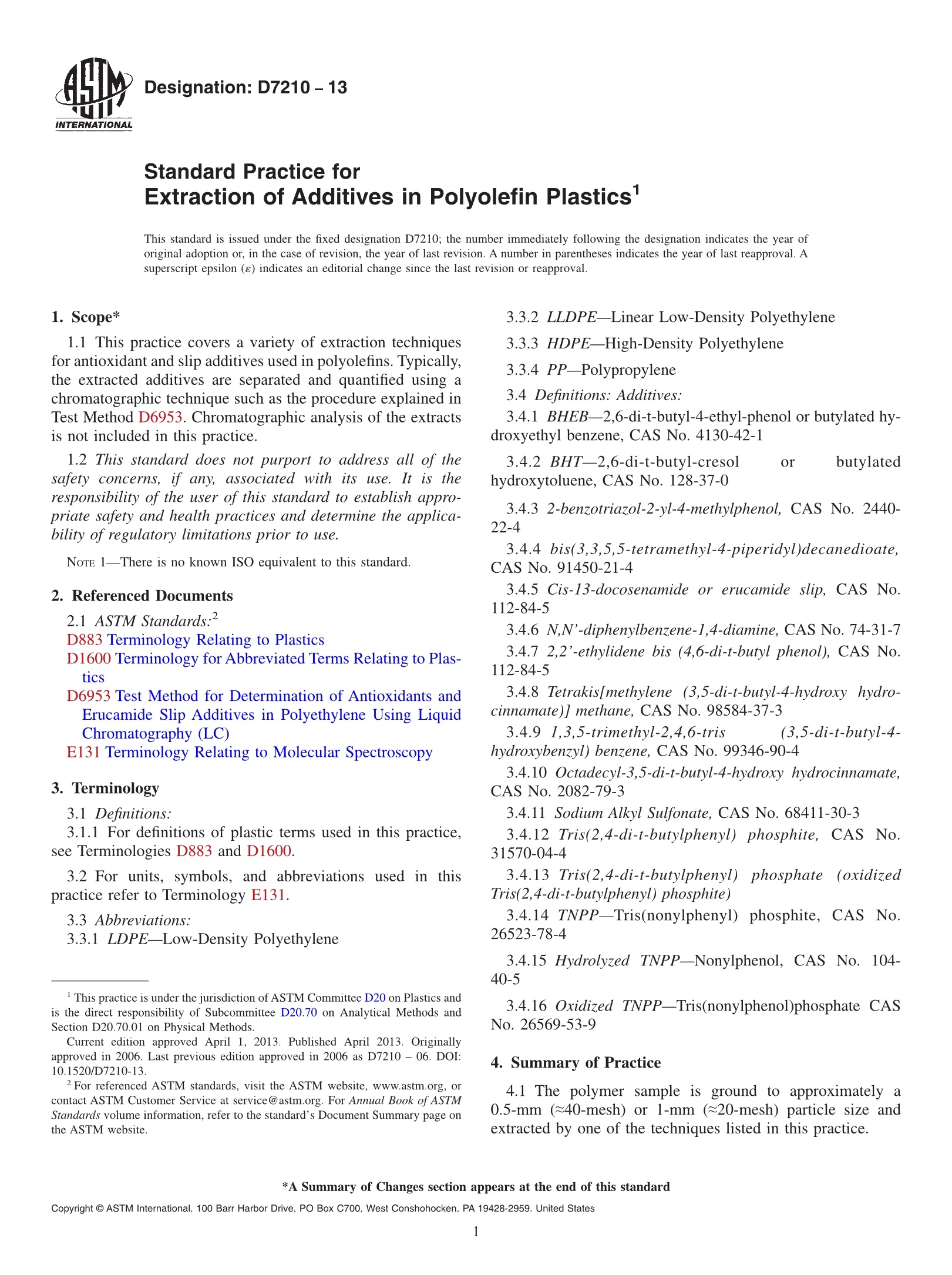
-
2/4
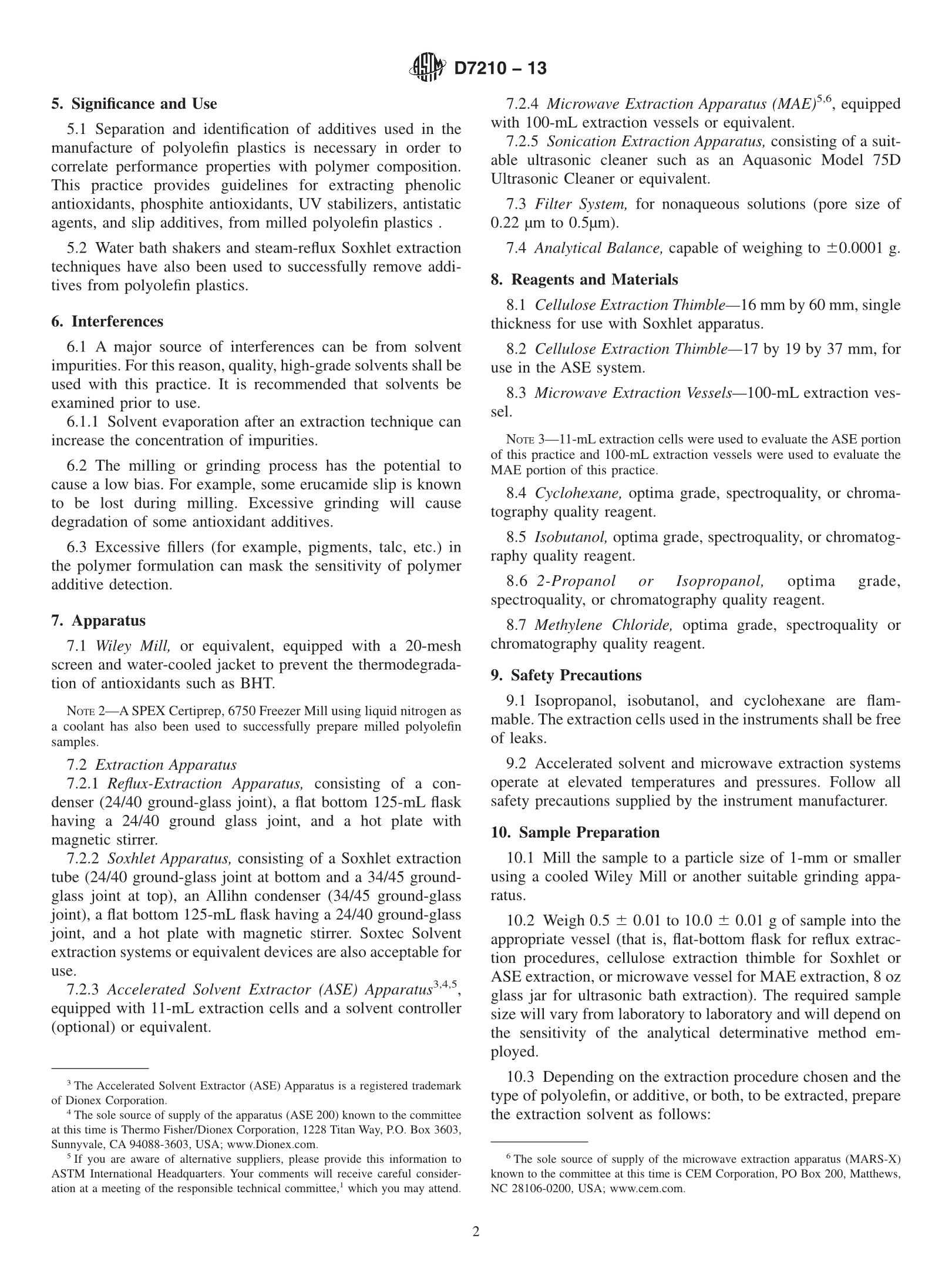
还剩2页未读,是否继续阅读?
继续免费阅读全文产品配置单
安东帕(上海)商贸有限公司为您提供《PE/PS中溴化阻燃剂检测方案(微波萃取仪)》,该方案主要用于其他中溴化阻燃剂检测,参考标准《暂无》,《PE/PS中溴化阻燃剂检测方案(微波萃取仪)》用到的仪器有安东帕微波萃取系统MW 5000、安东帕全自动微波萃取仪Monowave 450 。
我要纠错
推荐专场
相关方案


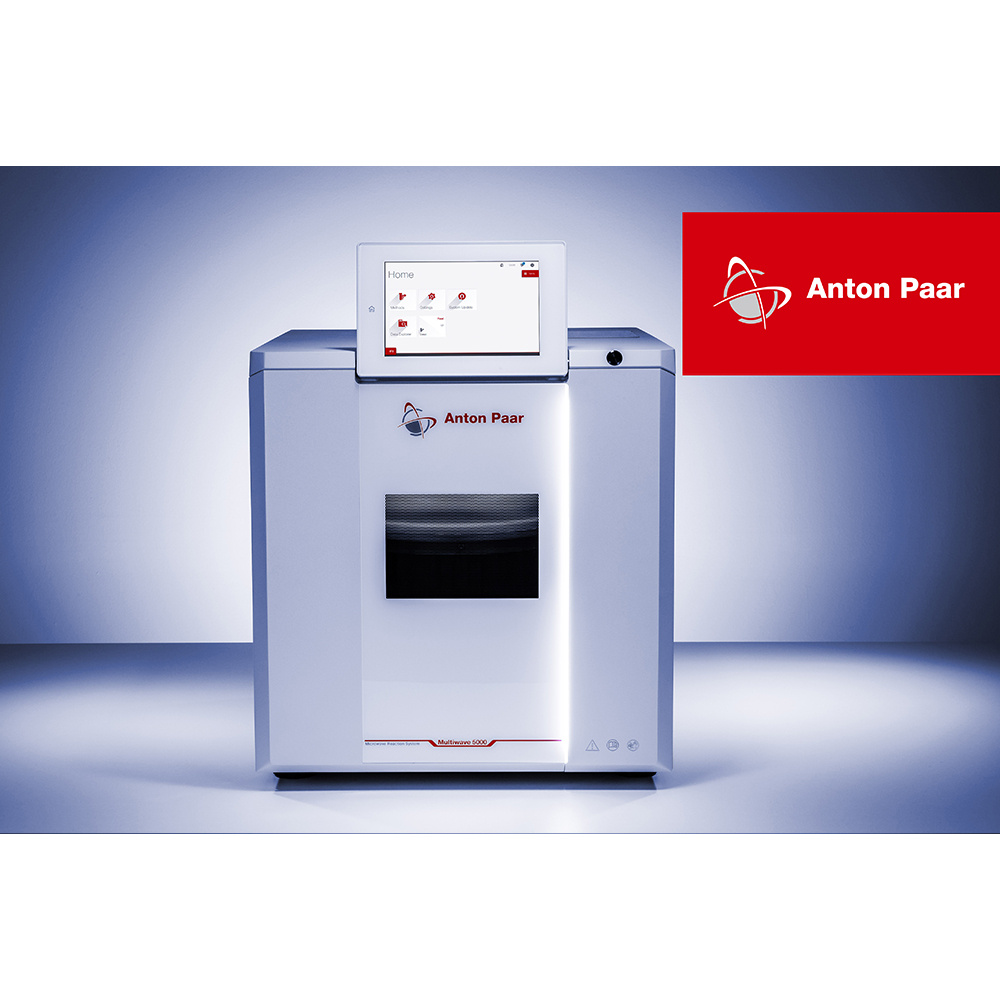
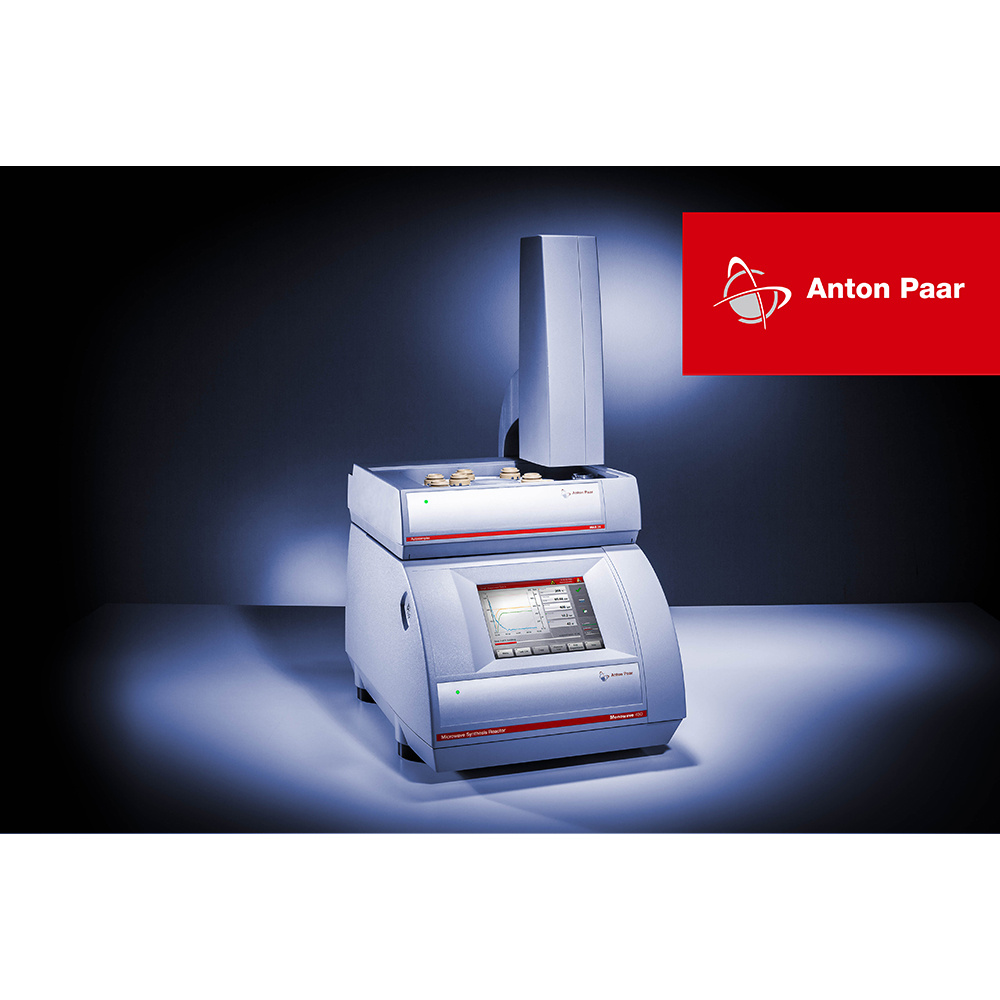
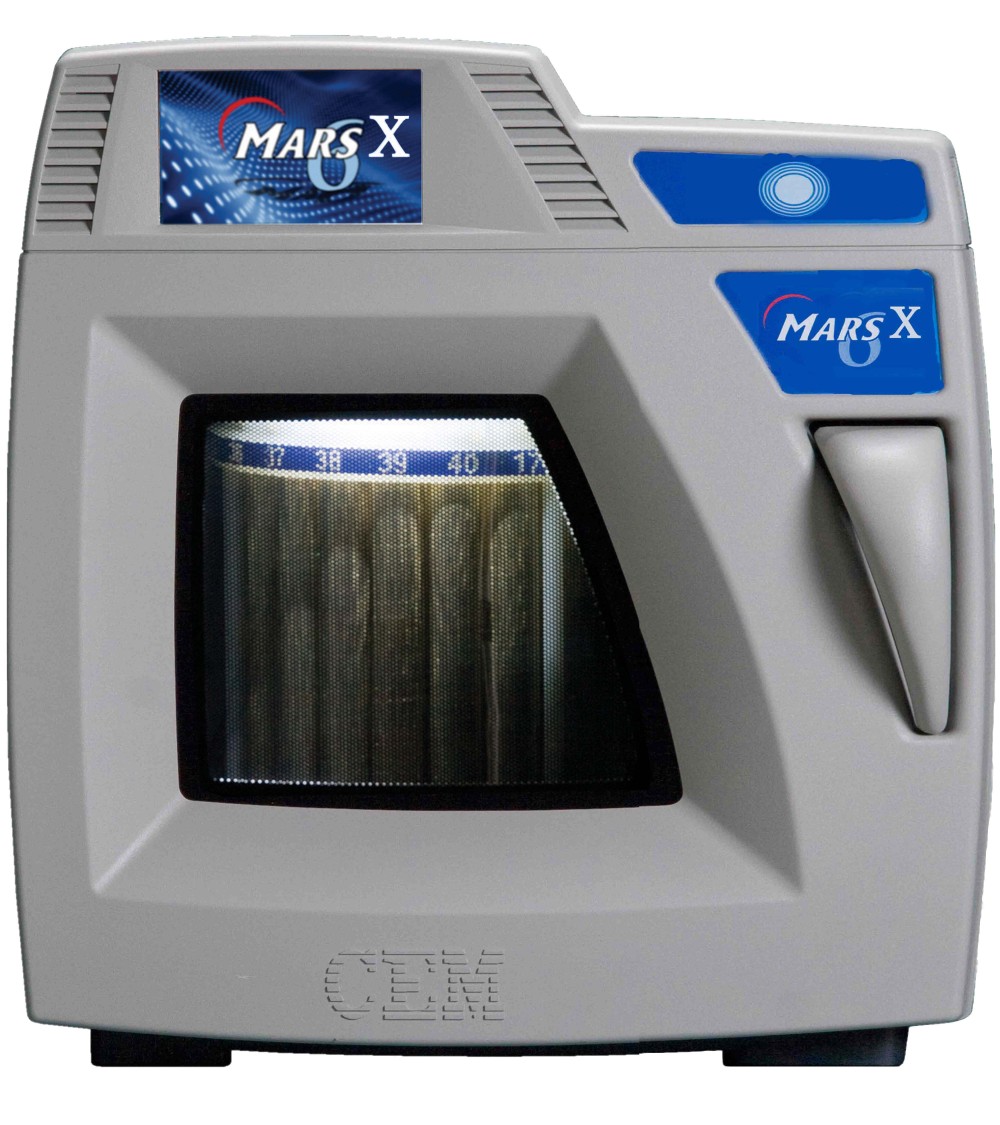
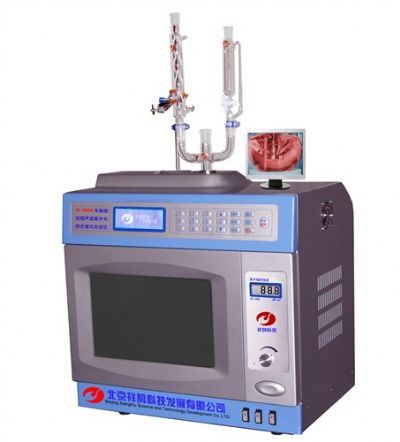
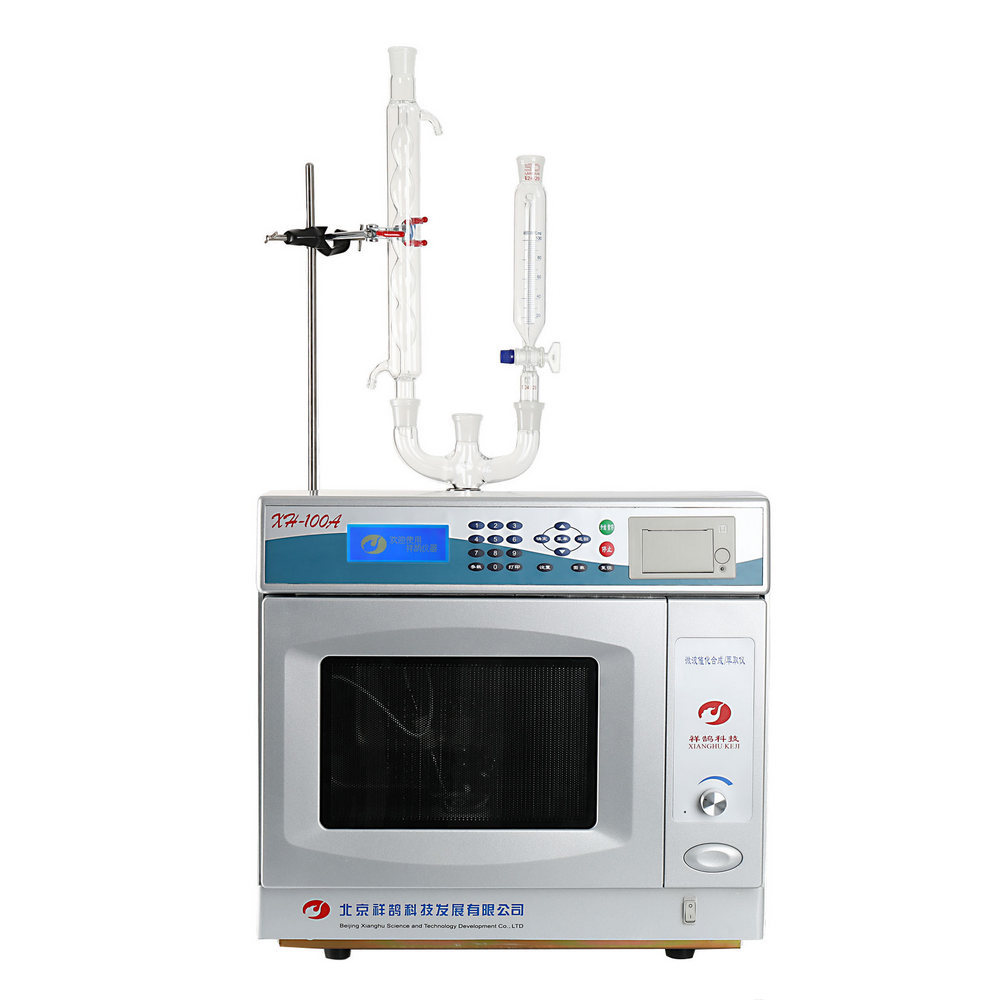
 咨询
咨询
